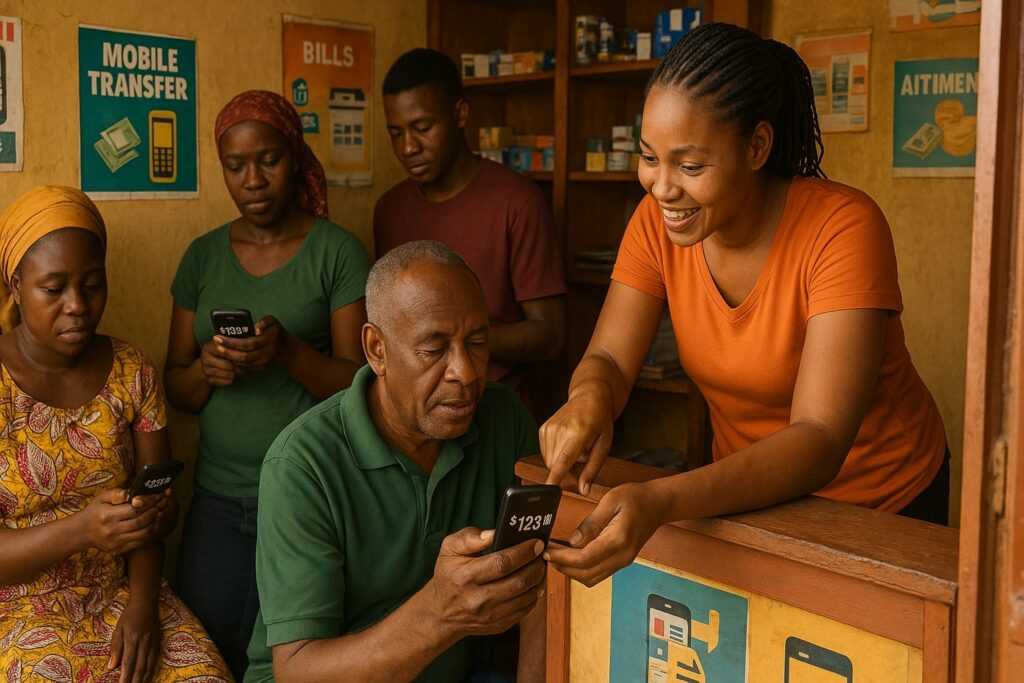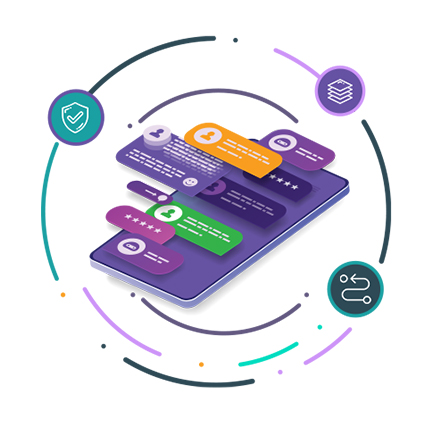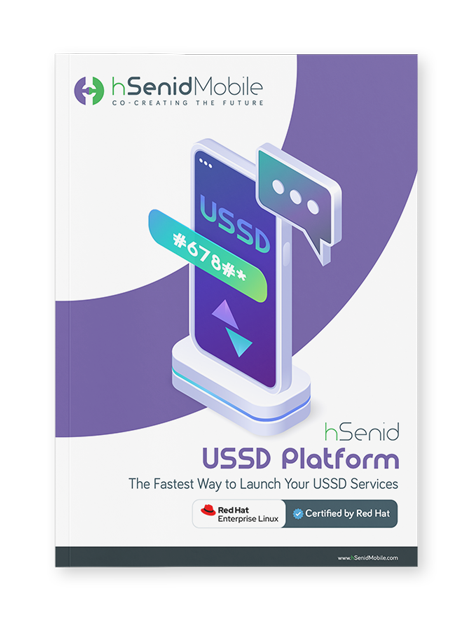We live in a world obsessed with the latest tech—smartphones, sleek apps, and lightning-fast 5G. So it’s no surprise that something as simple as USSD often gets overlooked. But in Africa? USSD is far from outdated. It’s still the backbone of how millions of people access critical services. From sending money to checking crop prices, USSD is quietly doing the work on feature phones without needing a single megabyte of data.
So, let’s talk about why USSD gateway providers are still essential and why, in many ways, they’re more important than ever.
According to the State of the Industry Report on Mobile Money 2025, released on Tuesday, mobile money services processed approximately 108 billion transactions in 2024 alone, representing a 20% increase in transaction volume compared to 2023. This marks yet another year of sustained double-digit growth for the mobile money industry.
In Nigeria, for instance, mobile transactions surged by 82.6% in 2020, reaching 1.69 billion transactions, with USSD alone accounting for 762 million, or 35% of total transactions (Statista). These figures demonstrate that USSD isn’t just surviving—it’s thriving.
A reliable USSD gateway provider enables banks, fintechs, and telcos to deliver these high-volume services securely and efficiently, even in areas with little or no data coverage.
It works on any phone. Doesn’t matter if it’s a Nokia 3310 or the latest iPhone. No apps. No internet. Just a quick dial—and boom, you’re connected to the service you need.
As some countries in Africa move to phase out 2G and 3G, there’s real concern about what happens to people still using basic phones. But with the right USSD gateway provider—one that supports everything from 2G to 5G—organizations can continue to reach everyone, not just those at the top of the tech ladder.
Through USSD, people can:
USSD platforms have helped mobile money become a $500 billion industry in Africa, providing crucial financial services to people with no access to traditional banking infrastructure.
And let’s not forget the flexibility of billing per session, per use, or even bundled—enabled by powerful charging modules built into modern gateways.
Thanks to providers like hSenid Mobile, you can now use simple drag-and-drop tools to create your menus. Want it in multiple languages? Done. Need to test it in real time? Easy. Even non-technical teams can launch services that work across all generations of mobile networks. It’s user-friendly and future-ready.
Their blend of AI-powered USSD, 5G readiness, and easy-to-use tools makes them the ideal partner for operators looking to scale, innovate, and serve better, without leaving anyone behind.
So, let’s talk about why USSD gateway providers are still essential and why, in many ways, they’re more important than ever.
1. USSD Powers Most Mobile Money in Africa and That’s a Big Deal
Sub-Saharan Africa is the global leader in mobile money, accounting for nearly 70% of the world’s $1 trillion in mobile money transactions in 2021 (GSMA). Critically, over 90% of these transactions are conducted via USSD, highlighting its irreplaceable role in the region’s financial inclusion. The Global System for Mobile Communications Association (GSMA) has revealed that over $1.68 trillion flowed through mobile money accounts globally in 2024, demonstrating the growing role of digital finance in facilitating financial inclusion and economic activity across the world.According to the State of the Industry Report on Mobile Money 2025, released on Tuesday, mobile money services processed approximately 108 billion transactions in 2024 alone, representing a 20% increase in transaction volume compared to 2023. This marks yet another year of sustained double-digit growth for the mobile money industry.
In Nigeria, for instance, mobile transactions surged by 82.6% in 2020, reaching 1.69 billion transactions, with USSD alone accounting for 762 million, or 35% of total transactions (Statista). These figures demonstrate that USSD isn’t just surviving—it’s thriving.
A reliable USSD gateway provider enables banks, fintechs, and telcos to deliver these high-volume services securely and efficiently, even in areas with little or no data coverage.
2. You Don’t Need a Smartphone to Stay Connected
Let’s be real: not everyone has a fancy phone. And even when they do, mobile data isn’t always affordable. That’s where USSD shines.It works on any phone. Doesn’t matter if it’s a Nokia 3310 or the latest iPhone. No apps. No internet. Just a quick dial—and boom, you’re connected to the service you need.
As some countries in Africa move to phase out 2G and 3G, there’s real concern about what happens to people still using basic phones. But with the right USSD gateway provider—one that supports everything from 2G to 5G—organizations can continue to reach everyone, not just those at the top of the tech ladder.
3. USSD Helps Bring Financial Services to the Unbanked
45% of the adults in Sub-Saharan Africa don’t have a traditional bank account. But many of them do have a phone, and that’s where USSD steps in.Through USSD, people can:
- Open a mobile wallet
- Send and receive money
- Pay utility bills
- Access savings or microloans
USSD platforms have helped mobile money become a $500 billion industry in Africa, providing crucial financial services to people with no access to traditional banking infrastructure.
4. Yes, USSD Is Evolving Too
Some people still think of USSD as “old school.” But the reality? It’s quietly getting smarter. Platforms like hSenid Mobile’s USSD Suite are now built to work over 5G and integrated with AI and machine learning. That means better user experiences, like:- Resuming a session even if your signal drops
- Menus that remember your preferences
- Easy navigation with keywords, not just numbers
5. For Telcos, It’s a Goldmine
For telecom operators, USSD is more than just a service—it’s a revenue stream. By enabling:- Value-added services (VAS) like caller ringback tones, live scores
- Advertising through tag ads in USSD sessions
- Promotional campaigns and surveys that drive engagement and conversions
And let’s not forget the flexibility of billing per session, per use, or even bundled—enabled by powerful charging modules built into modern gateways.
6. You Don’t Even Need Developers to Build USSD Services Anymore
Building a USSD service used to be a job for engineers. Not anymore.Thanks to providers like hSenid Mobile, you can now use simple drag-and-drop tools to create your menus. Want it in multiple languages? Done. Need to test it in real time? Easy. Even non-technical teams can launch services that work across all generations of mobile networks. It’s user-friendly and future-ready.
7. It Handles Huge Traffic Without Breaking a Sweat
One thing people often forget: USSD handles millions of transactions daily. And that kind of scale requires serious infrastructure. With features like session management, powerful APIs, and integration with messaging protocols like SMPP+, it’s built to perform, even under pressure.So… Why hSenid Mobile?
For over 27 years, hSenid Mobile has been a pioneer in mobile communication platforms, especially across emerging markets in Africa, Asia, and the Pacific. As a trusted USSD gateway provider, hSenid has helped leading telecom operators, banks, and enterprises bring inclusive, real-time services to life, touching the lives of millions every day.Their blend of AI-powered USSD, 5G readiness, and easy-to-use tools makes them the ideal partner for operators looking to scale, innovate, and serve better, without leaving anyone behind.








